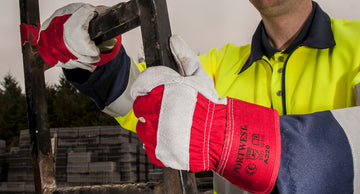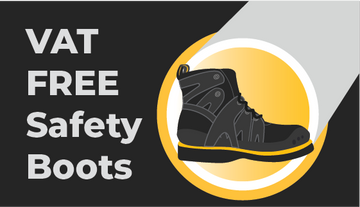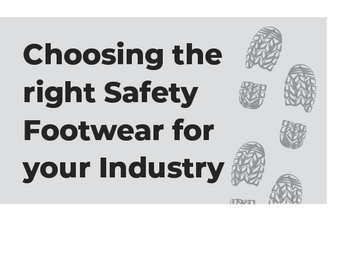Choosing the Right Safety Gloves
Making the right choice for your industry.
It's easy to understand the need to wear protective gloves in certain workplace environments - but choosing the right safety gloves is vital.
Our hands are often a vital necessity to get the job done, so keeping them free from possible injury should be a great priority.
Unfortunately, many struggle when it comes to selecting the right glove for the job, which can lead to a higher risk of injury and a potential loss of productivity.


Protect your biggest assets!
Our guide will help you get the most out of your money and make sure you're choosing the right glove for the job. Firstly, look at the hazards within the potential environment and the amount of protection required.
You may need protection from any of the following:
- Heat, flames and cold temperatures
- Cuts, punctures and abrasions
- Chemicals, liquids and acids
- Vibration, impact and shock
Know the EN Standards for Choosing the Right Safety Gloves
The best way to protect your hands is to choose a glove that conforms to the relevant European Standards for your industry, but what are they? Below is a list of the current EN standards for hand protection.
Wray Bros top tip: info not in the product description? Have a look at the safety data sheets that should be attached to a glove's product listing where it will detail how well the gloves perform.
- EN 420: the standard in protective glove safety, for both disposable and reusable glove options. General requirements for protective gloves including design and construction, innocuousness, cleaning instructions, electrostatic properties, sizing, dexterity, water vapour, transmission and abosrption along with marking and information.
- EN 388: protective gloves against mechanical risks. This covers protection from physical injury to the hand such as abrasion, blade cuts, punctures and tearing of the glove and skin.
- EN 407: protection against thermal risks such as heat and/or fire. There are 6 key performances in which they will be tested against: resistance to a large melting metal spray, resistance to small melting metal spray, resistance to radiating heat, resistance to convective heat, resistance to contact heat for 15 seconds, and resistance to flammability.
- EN 12477: protective gloves for welders. These have been tested for use in manual metal welding, cutting and allied processes. Classified into two types: Type A (lower dexterity and Type B (higher dexterity).
- EN ISO 1809: protective gloves for mechanical vibration and shock. Tested and data analysed for the vibration transmissions from handle to the palm of the hand.
- EN 374: protection against chemicals and micro-organisms. The glove needs to be liquid proof before it meets this specific standards.
- EN 16350:2014: protective gloves for electrostatic properties. Can be used in areas where there may be an increased risk of explosion e.g. a refinery.
- EN 455:2000: medical gloves for single use.
- EN 511:2006: protects against conductive cold, down to -50°C.
- EN 381-7: helps to protect against cuts, lacerations and more serious injury when operating a handheld chainsaw.

What are the other considerations?
Before buying grip gloves, heat or cut-resistant gloves it is worth considering a few other factors that could affect your final choice that revolve around the task to be performed, the frequency and duration of the task, for instance:
- Thickness matters - the thicker the glove, the better the protection - the thinner the glove, the better the dexterity.
- How long will the gloves be worn for? Comfort becomes an increasingly important factor the longer the glove is worn. Hands can sweat inside, making them uncomfortable to wear, therefore it's recommended to let staff regularly remove gloves let their hands breath. To help, some suppliers provide liner gloves to wear under the safety gloves to help absorb the moisture.
- A textured glove will affect handling - gloves with a rough or textured surface offer a better grip than those without.
- Gloves should fit comfortably. Hands can feel tired and lose their grip if gloves are too tight. Furthermore, gloves that are too big for your hands can be uncomfortable and the extra folds of material could affect ability to work effectively.
- When working in cold environments a more suitable glove will be required. Whilst leather gloves offer some protection from the cold, they are not so effective when wet. Specific cold weather gloves and cold grip gloves are a better choice for working in wet and cold temperatures whilst breathable gloves suit warmer conditions.
- Consider cuff styles such as unsupported; beaded, straight; pinked; supported; gauntlet; knitwrist; safety cuff; slip on cuff.
Glove Cuff Styles
In the realm of safety gloves, there are several cuff style choices all of which should be considered based upon the specific application needs. The options we see the most commonly are: knitwrist, safety cuffs, band top, slip-on and gauntlet cuffs.
- Knitwrist cuff fits snugly to the wearer's wrist, therefore keeping the dirt out and reduces glove slippage. The reduction in slippages offers extra grip around the wearer, but does often mean a slower glove removal from the hand. It is great for cooler months and environments, and is usually found on a variety of glove styles: cotton, string knits clute leather and coated gloves.
- Safety cuff provides extra protection to the wearer's wrists from abrasion, featuring an open cuff which allows ventilation. As it does not hug the wearer, it's ideal for quick removal. The cuff is quite often found to be 2½" in length and usually on leather work gloves.
- Slip-on cuff allows for quick and easy putting on and removal by having no seam between the glove and cuff. This way it stands away from the wrist. Typically, the slip-on cuff is found on lined jersey gloves and leather drivers.
- Gauntlet cuffs are popular in environments where wearers need additional wrist and forearm protection. It features an open cuff, allowing for ventilation and quick removal. The gauntlet cuff is usually 4½" in length and generally found on leather work gloves.

Coming to a Decision
Once you have considered all the factors mentioned in this article you'll have a better picture of which safety gloves are more suited to your industry and your specific requirements. Making an informed decision at this stage and purchasing the correct gloves will save you time and money in the long run. It will also ensure that staff members wearing the gloves are completely safe performing the tasks at hand and remain as comfortable as possible throughout.
The Wray Bros customer service team have the knowledge and expertise in our quality products to help you in any given situation you may be facing. For further help and guidance about industrial safety gloves or other PPE supply queries, contact us.






